Tsukemono (Japanese Pickles) 漬物
Japanese pickles are normally served with rice and miso soup. There is also a wide variety of Japanese pickles, from salt-only pickles to pickles using rice vinegar and sugar, and pickles using rice brans or rice koji. Japanese pickles play an important role in Japanese meals. Please see the world of Japanese pickles.
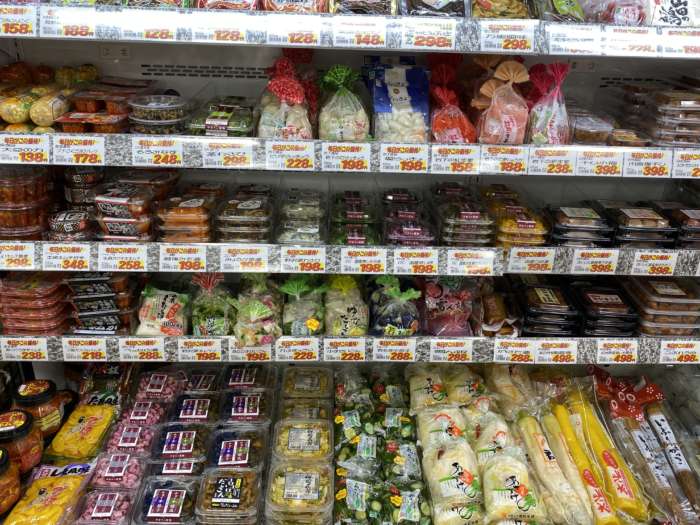
What is the characteristic of Japanese pickles ?
Tsukemono (Japanese Pickles, 漬物) – are preserved vegetables that are pickled in salt (or salt water), soy sauce, vinegar mixed with sugar, miso, sake lees, rice bran or rice koji. They are variously called Tsukemono, Kou no mono, or Shinko can be salty, sour, tart, piquant, or sweet.
Pickling time ranges from a few minutes to a few hours to a few years, and some pickles are fermented in the process. They also vary widely in texture: cucumber pickles are crispy, eggplant pickles are soft and may squeak in your teeth. Takuan, the popular yellow pickle made from dried daikon, is sweet and crunchy.
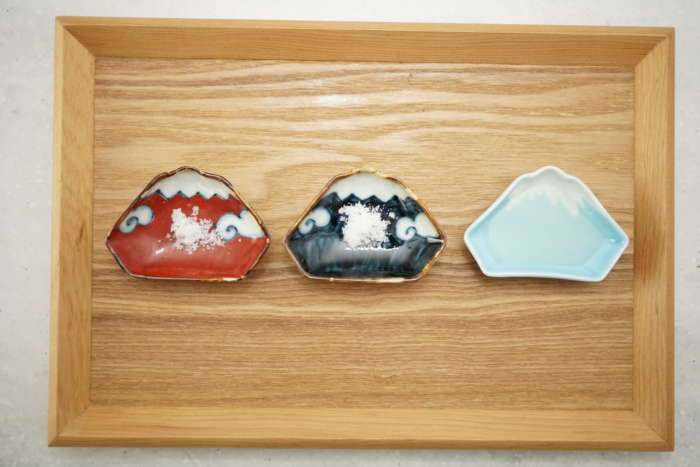
From the thin-sliced pickled ginger at the sushi counter to kaiseki meals that traditionally end with them, pickles are present in some form at most Japanese meals. Benishoga, or bright red pickkled ginger, is a popular accompaniment to fried noodles with vegetables called yakisoba. Curry is often served with sweet, red pickles made from seven different vegetables called fukujinzuke.
Some of the most distinctive pickled items are called Naraduke which originated in Nara, in the kansai region. These melon gourds, and other vegetables are pickled in sake kasu (sake lees) for as long as three years. Many of the melons and gourds arwe long, thin varieties, and after pickling, are presented in a spiral that resembles a sausage and covered in a brown slurry.
Another distinctive type of pickle, nukazuke, uses nuka (rice bran) as the fermenting agent. In the market the nuka looks like wet sand and covers whole pickled vegetables such as cucumbers, carrots, or daikon radishes. Before eating, the bran is rinsed off and the vegetables are cut up into bite-size pieces. The resulting aroma and flavor are quite different from pickles made with salt or vinegar. In Tokyo, local pickle bettarazuke: daikon pickled in rice koji slurry is popular.
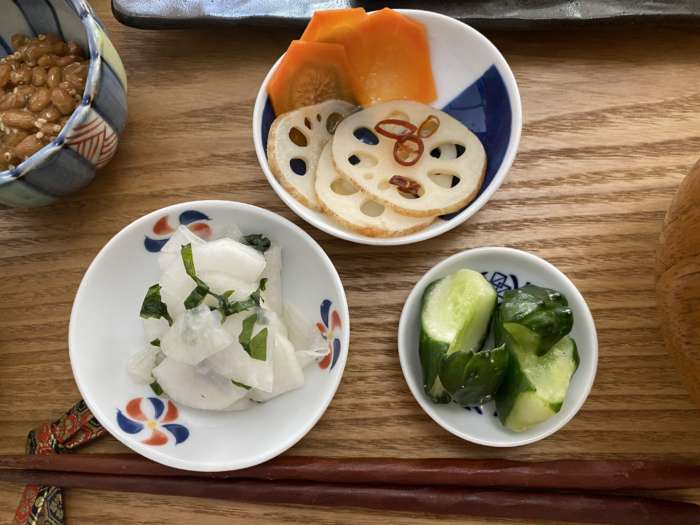
In Japan, it is usually served with various Japanese dishes, including Japanese breakfast, soba or udon noodles and donburi dishes. Pickles play an important role in balancing the whole dish, even though it is a small dish. For example, pickles have the effect of refreshing the mouth. For this reason, pickles are called konomono (Kou no mono, 香の物) or “fragrant things” or “fragrant foods” at long-established Japanese restaurants.
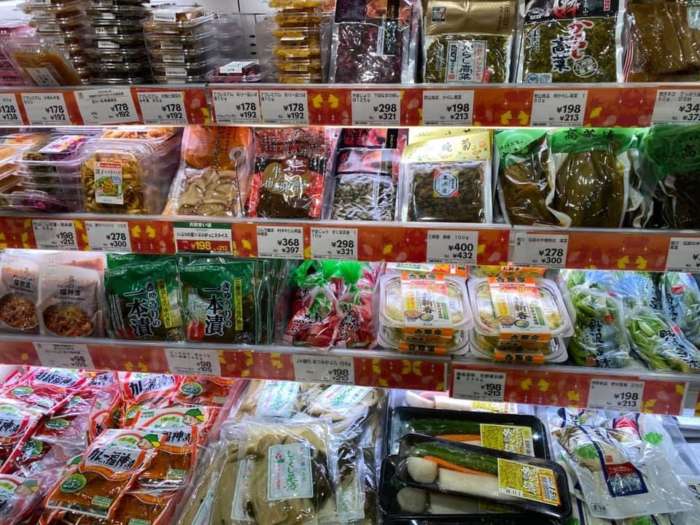
Best 3 Healthy Benefits
1. Vitamins
2. Antioxidant
3. probiotics = digestive system healthy
Top 10 Popular Japanese pickles
1. Shio-zuke (salted pickles, 塩漬け)
2. Umeboshi (Pickled plum, 梅干し)
3. Takuan (Pickled daikon, たくあん)
4. Shibazuke (Pickled in salt and red shiso leaves, しば漬け)
5. Asazuke (Lightly pickled vegetables, 浅漬け)
6. Nukazuke (Pickled vegetables in rice bran, 糠漬け)
7. Kasuzuke (Pickledvegetables in rice koji/mold, 粕漬け)
8. Shinshoga (Pickled ginger, 新生姜)
9. Rakkyo (Pickled Chinese onion, らっきょう)
10. Benishoga (Pickled and colored ginger, 紅生姜)
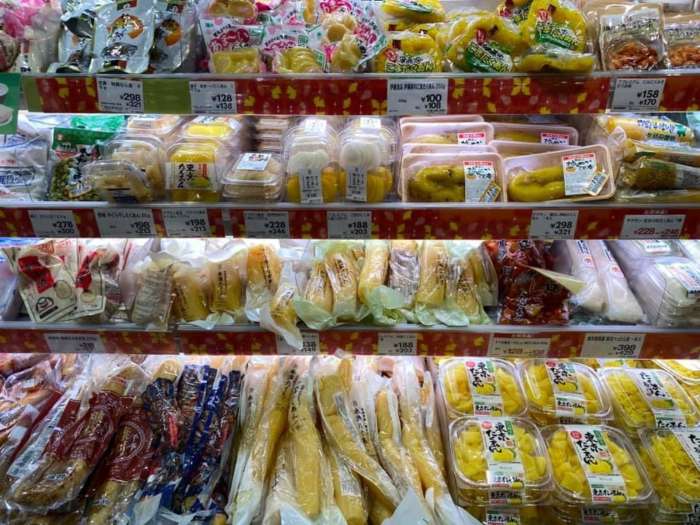
What are the popular vegetables for Japanese pickles?
– Cucumber(きゅうり)
– Daikon radish(だいこん)
– Eggplant(なす)
– Carrot(にんじん)
– Chinese cabbage(はくさい)
– Turnip(かぶ)
– Lotus root(れんこん)
– Chinese onioin(らっきょう)
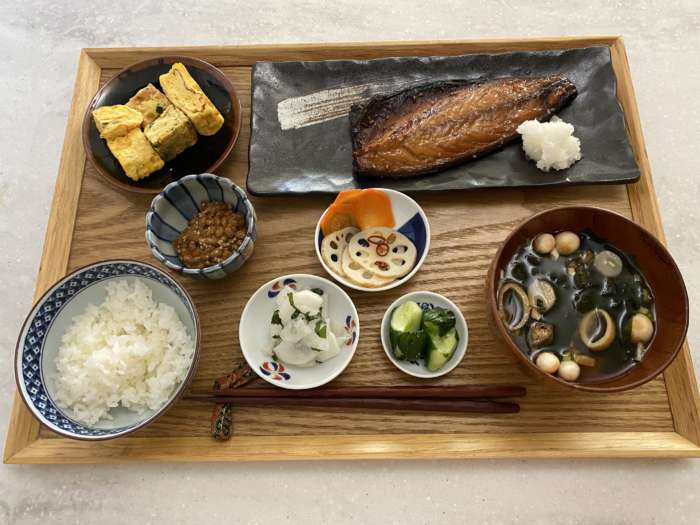
Watch How To Make Tsukemono
Recipe : Japanese Pickles
You might also like…
1. Cucumber and shiso pickles
2. How to cook Japanese rice with using pot
3. How to cook Japanese rice with using rice cooker
4. Miso soup
5. Veggie miso soup
Editor’s Note: This post was originally published on November 4th, 2020.









